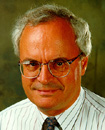
Hans P. Paar
ProfessorPh.D. Columbia, 1974
hpaar@ucsd.edu (858) 246-0405 (CASS office) or 858 534-5248 (Lab)
I am a member of the POLARBEAR collaboration. This collaboration includes members from UCB, KEK and other institutions in Japan, and various institutions in Europe. POLARBEAR's telescope is located in the Andes Mountains in Chile at 17,000 feet. The POLARBEAR collaboration announced the first observation of sub-degree scale B-modes. This result was based upon data from the first season's observations (a period of about one year starting in 2012). These B-modes are thought to originate from gravitational lensing of the CMB. Such lensing, when measured precisely, will provide information about the mass distribution (luminous and dark) in the Universe and the sum of the three neutrino masses. Two more years of observations are being analyzed and will strengthen the statistical power of the POLARBEAR results.
The BICEP2 collaboration reported the first observation of degree-scale B-modes after integrating data over a period of three years.
These long-sought B-modes are thought to originate from gravitational waves in the plasma prior to recombination. These waves are thought to be caused by Inflation so the observation of these B-modes provides support for the hypothesis of Inflation. Interstellar dust is capable of producing degree-scale B-modes and future research is directed toward their measurement in order to certify that THE BICEP2 results contain a significant component from inflation. The contribution from dust can be determined by measurements at different frequencies, something that has not been done yet and is pursued by several collaborations. POLARBEAR is in a unique position to contribute because of the planned and funded additional two telescopes and three new receivers each of which can observe at two frequencies. Observations with three telescopes observing among them at three or more frequencies can disentangle the contributions of Inflation and dust. This program is planned to start in Fall 2015.
For more information, please consult the Polarbear website.
Creation / Modification Date: Feb 26, 2014